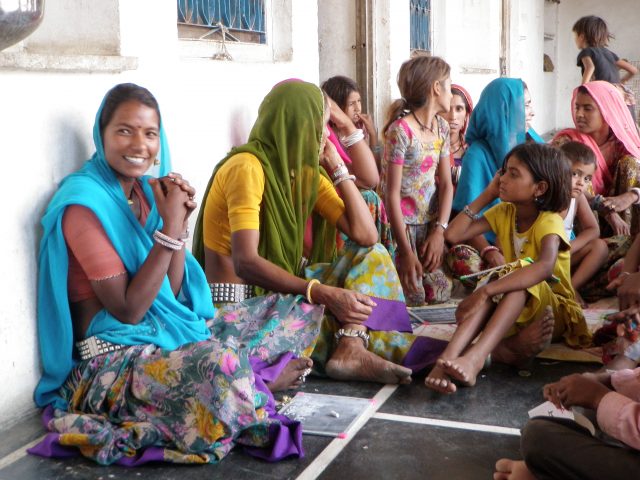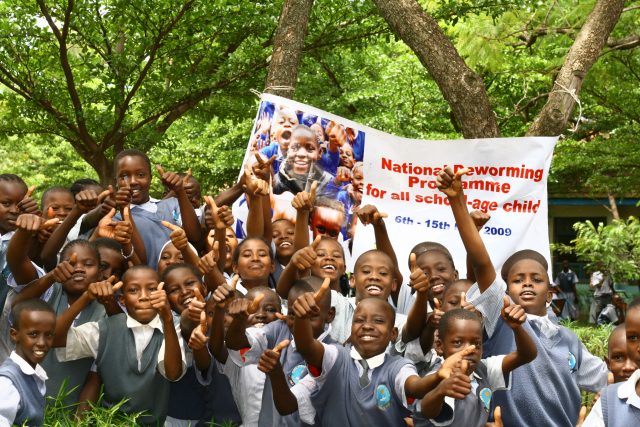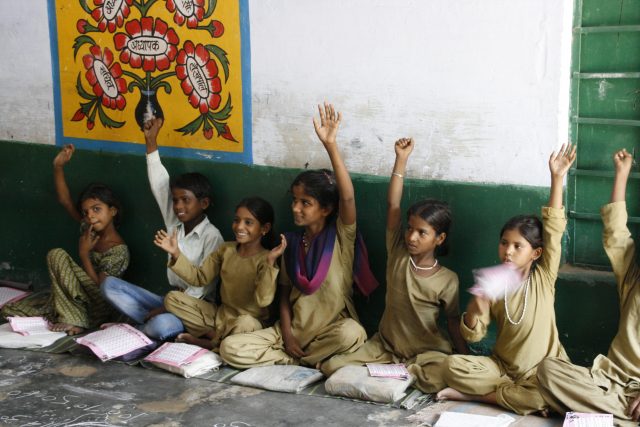By Rachel Glennerster, Executive Director, Abdul Latif Jameel Poverty Action Lab (J-PAL)
I’ve worked for more than 13 years in rural Sierra Leone. In this time, I have watched a quiet revolution take place: education has become the norm. Few of the adults in the communities in which I work ever saw the inside of a school, yet nearly all of their children are enrolled in school.
This is a remarkable transformation in the space of one generation, and Sierra Leone is far from unique: a similar pattern has been repeated across Africa and South Asia. But we cannot rest here. Worldwide, over 130 million girls are out of school. Many millions more do not attend school regularly, and fall further and further behind their school mates.

Girls outside their school in Morocco. (Photo: Claire Bernard | J-PAL/IPA)
What can we do to make sure that every girl, wherever she lives, has the opportunity to learn? And what contribution can research make to this global challenge?
Well-designed research can help us understand not just whether a particular program worked, but also – especially when we look across many studies – why something worked, what some of the underlying barriers to girls schooling are, and how to adapt this knowledge to new places. I lead the Abdul Latif Jameel Poverty Action Lab (J-PAL), a research center based at MIT that uses evidence from randomized evaluations of social programs – a rigorous way of assessing impact – to understand these dynamics and, in turn, to design better programs.
We recently launched a major review of the scientific literature on schooling. In the review, four common barriers to girls’ education jumped out:
Distance
Data shows that longer walks to school mean less schooling for all, but distance hurts teenage girls the most. Around the world, teenage girls find it hard to travel far to school – they may face community disapproval, get catcalls, not have enough time to travel given their chores, or be at serious risk of violence.

Girls and women at a school in India. (Photo: Vipin Awatramani | J-PAL/IPA)
Research highlights some simple solutions – like creating local community schools in rural areas of Afghanistan and giving girls bicycles to reduce travel time in India.
Cost
Even relatively small costs deter kids from going to school. Programs that pay for school fees, school uniforms, or provide small cash benefits, can make all the difference. In high-income countries, we tend to take it for granted that public schools are free, but that is not true for many of the world’s poorest countries – especially at the secondary school level where annual school fees can be as much as one-third of annual income.
Eliminating school fees can lead to large education gains. In Ghana, giving scholarships to those who could not afford school meant that many more children enrolled in school, and 26 percent more completed senior high school. Among teenage girls, the scholarships led to fewer girls marrying and having kids.

Girls at a school in Kenya. (Photo: Alissa Fishbane | J-PAL/IPA)
Even small changes in costs can have important impacts. Paying for school uniforms in Kenya and school meals in Burkina Faso and Uganda helped increase girls’ attendance and reduced dropout. This means that, for the sake of a few dollars for a school uniform, a girl can miss out on years of education, permanently changing the trajectory of her life.
Health
Costs aren’t just financial. When a child is sick, attending school can take much more effort. Improving girls’ health can make them more likely to attend, and learn more in school.

A deworming program in Kenya. (Photo: Alissa Fishbane | J-PAL/IPA)
When a school-based deworming program in Kenya helped get rid of kids’ intestinal parasites, girls missed fewer days of school, completed more schooling, and were more likely to pass the secondary school entrance exam.
Misperceptions
Fostering realistic dreams can pay off. While the costs of school are immediate and clear, the benefits are far off and sometimes hard to see. Telling people about the good jobs that educated women can get, and about the availability of scholarships for further education, can motivate girls and their parents to invest more time and money in education.
In India, holding information sessions on job opportunities for educated women, and reserving seats for female leaders in village councils so that girls saw women role models, both increased girls’ enrollment in school and changed girls’ and parents’ aspirations for the girls’ futures.

Girls in school in India. (Photo: Francisca de Iruarrizaga | J-PAL/IPA)
Student motivation can also be a powerful tool to improve girls’ education outcomes. A program in Kenya that provided merit-based scholarships to the top 15 percent of girls increased daily attendance and test scores for all girls, not just those who were already at the top of the class.
Some of these ideas you may have heard before; others may be new. But the lessons above come from 58 high-quality randomized trials across 28 low- and middle- income countries in Africa, Asia, and Latin America. This knowledge represents the state of the art in rigorous evidence on how to address the global schooling challenge.
Of course, not every program found to be effective in one place should be implemented in another – but these broad insights, when considered alongside local data and contexts, can help inform the decisions of policymakers and others seeking to improve access to education and learning for all.
Over the coming weeks, we will explore each of these 4 barriers to girls’ education—and the evidence on what worked to overcome them—through a new J-PAL blog series. We hope you’ll join us!
See the full evidence synthesis here, and learn more about J-PAL’s work in education here.
Co-authored with Meagan Neal (Policy Associate, J-PAL Global). Have a question for us on how to break barriers to girls’ schooling? Ask us on Twitter! Tweet your question @JPAL_Global using the hashtag #askJPAL



